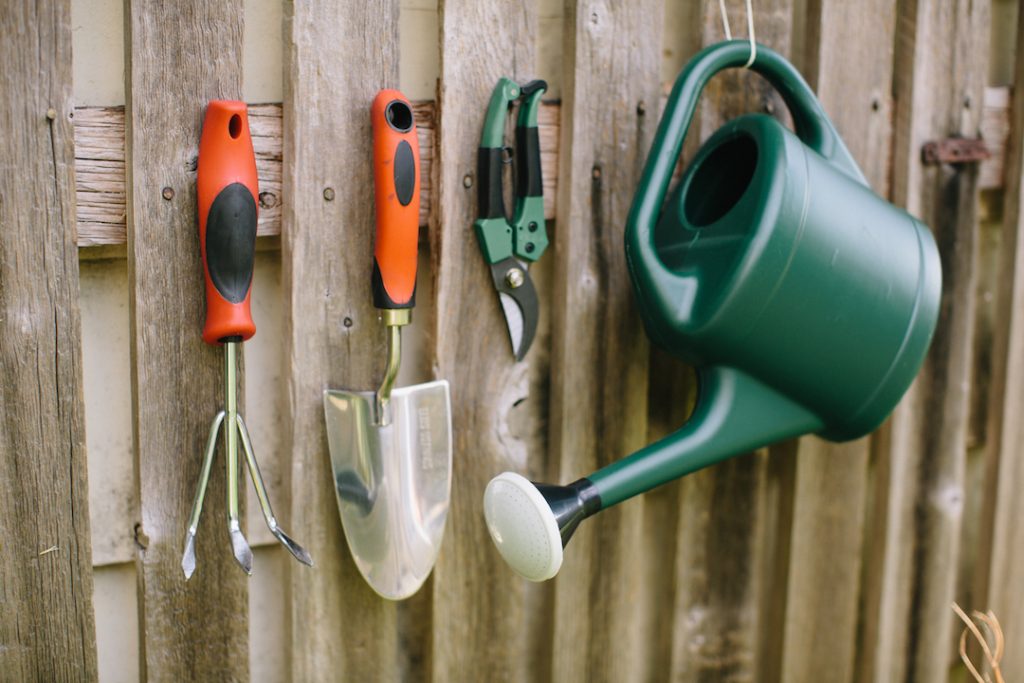Gardening Tool Care Tips
Article by EZ Biz Niz
 As the cool winds of autumn usher out another gardening season, I can’t help reflecting on what I accomplished in the garden over this past summer. Although I planted lots of new perennials, potted up summer bulbs and separated clumps of flowers with clashing colours, what I’m most proud of is taking apart and cleaning my secateurs.To many of you, disassembling secateurs or pruners may seem like a simple thing, but to those of us who are intimidated by a screwdriver, it’s a very brave thing to do. In part, that’s because a good pair of secateurs costs the earth – a pair of secateurs lying in bits and pieces is worthless. So, after carefully disassembling and cleaning my favourite pruners, I was very relieved when all of those funny looking parts snapped back into place.
As the cool winds of autumn usher out another gardening season, I can’t help reflecting on what I accomplished in the garden over this past summer. Although I planted lots of new perennials, potted up summer bulbs and separated clumps of flowers with clashing colours, what I’m most proud of is taking apart and cleaning my secateurs.To many of you, disassembling secateurs or pruners may seem like a simple thing, but to those of us who are intimidated by a screwdriver, it’s a very brave thing to do. In part, that’s because a good pair of secateurs costs the earth – a pair of secateurs lying in bits and pieces is worthless. So, after carefully disassembling and cleaning my favourite pruners, I was very relieved when all of those funny looking parts snapped back into place.
The experience also made me feel a lot more confident about cleaning and caring for the other tools in my shed. So, for you brave souls willing to master new skills, here’s a checklist of tool care tasks, starting with secateurs.
Cutting tools
Without diagrams and a lot more space than this column allows, I can’t give you step-by-step instructions on how to disassemble, clean and sharpen your secateurs. But I will recommend that you find a good book or surf the Internet for instructions – there’s lots of good information already available.
Generally, all cutting tools, including secateurs or pruners, have a habit of getting all gummed up with sticky residues. To clean shears, loppers, pruning saws and pruners, use a rag dipped in paint thinner to remove the sap and pitch from their blades. Then, sharpen them with a file or wet stone before protecting them from rusting with a spray or wipe of WD-40 oil.
Hand tools
Dirt builds up on hand tools such as trowels and cultivators. Wash them with soapy water and scrub them with a stiff-bristled brush or steel wool to dislodge crusty chunks of dirt. Inspect the handles of your tools and re-glue any that have become loose. To prevent unpainted wooden handles from drying and splitting, give them a swipe with a rag moistened with linseed oil, removing the excess oil with a clean cloth. Tools with painted handles can be touched up if necessary, or brushed with brightly coloured paint that’ll be easy to spot in the garden.
Hoses and sprinklers
To guard against splitting and cracking, drain all hoses. Then, store them coiled on a flat surface – hoses hung up on nails might crack where they bend over the nails. Drain and turn off outside taps to prevent pipes from freezing and bursting.
Large tools
Clean large tools such as shovels, rakes, hoes and edgers with soapy water, removing soil with a wire brush or steel wool. Sharpen the blades of digging tools – they’ll perform much better with sharp edges. Wipe or spray metal parts with WD-40 to prevent rusting. Rub linseed oil into wooden handles to prevent drying and splitting, finishing with a swipe of a dry cloth to the remove excess oil.
Storage
After cleaning your tools, store them in a dry place away from rain and snow. Hang tools with handles such as spades, rakes and hoes on the walls of your garage or garden shed where they’re out of the way, yet easily accessible when you’re ready to use them in the spring. Place hand tools in a basket or bucket where they won’t go astray. Then, hang up your hat, take off your gloves and hope for an early spring!
Leave a Reply
You must be logged in to post a comment.